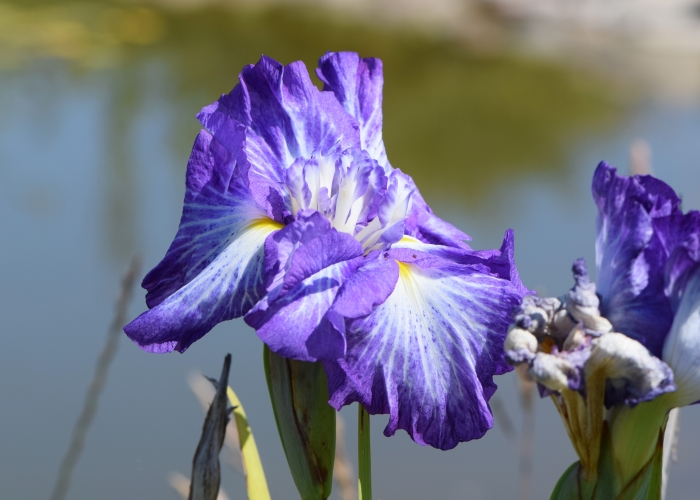Japanese Iris
(Iris ensata)
Japanese Iris (Iris ensata)
/
/

Krzysztof Ziarnek, Kenraiz
CC BY-SA 4.0
Image By:
Krzysztof Ziarnek, Kenraiz
Recorded By:
Copyright:
CC BY-SA 4.0
Copyright Notice:
Photo by: Krzysztof Ziarnek, Kenraiz | License Type: CC BY-SA 4.0 | License URL: https://creativecommons.org/licenses/by-sa/4.0 | Uploader: Kenraiz | Publisher: Wikimedia Commons | Title: Iris_ensata_'Cascade_Spice'_kz01.jpg | Notes: Transferred from Flickr by [[User:Jacopo Werther]] |
















































































Estimated Native Range
Summary
Iris ensata, commonly known as Japanese Iris, is a deciduous perennial herb that is native to the wetlands, marshes, and along the edges of ponds and streams in Japan, China, Korea, and the Russian Far East. It typically grows to 80 cm (31 in) tall, with elegant strap-shaped leaves that provide a vertical accent in garden settings. The flowers, which appear in midsummer, are showy and large, often up to 6 inches across, and come in a range of colors including purple, violet, blue, and white, with a distinctive yellow or white signal area on the falls. The bluish-purple color of the flowers is an example of the copigmentation phenomenon, which involves the interaction of pigments to enhance color intensity.
Japanese Iris is valued for its striking flowers and is often used in water gardens, bog gardens, and at the margins of ponds. It is also suitable for traditional garden beds and borders where soil moisture can be maintained. It requires consistently moist to wet soil and benefits from a slightly acidic pH. While it can tolerate part shade, full sun is preferred for the best floral display. Iris ensata does not typically suffer from serious pest or disease problems, but it can be susceptible to iris borer and root rot if conditions are too wet. It is important to divide clumps every few years to maintain vigor.CC BY-SA 4.0
Japanese Iris is valued for its striking flowers and is often used in water gardens, bog gardens, and at the margins of ponds. It is also suitable for traditional garden beds and borders where soil moisture can be maintained. It requires consistently moist to wet soil and benefits from a slightly acidic pH. While it can tolerate part shade, full sun is preferred for the best floral display. Iris ensata does not typically suffer from serious pest or disease problems, but it can be susceptible to iris borer and root rot if conditions are too wet. It is important to divide clumps every few years to maintain vigor.CC BY-SA 4.0
Plant Description
- Plant Type: Herb
- Height: 2-4 feet
- Width: 1.5-2 feet
- Growth Rate: Moderate
- Flower Color: Blue, Purple, White
- Flowering Season: Summer, Spring
- Leaf Retention: Deciduous
Growth Requirements
- Sun: Full Sun, Part Shade
- Water: Medium, High
- Drainage: Slow
Common Uses
Bee Garden, Bird Garden, Border Plant, Butterfly Garden, Deer Resistant, Fragrant, Hummingbird Garden, Rabbit Resistant, Rock Garden, Salt Tolerant, Showy Flowers, Water Garden
Natural Habitat
Wetlands, marshes, and along the edges of ponds and streams in Japan, China, Korea, and the Russian Far East
Other Names
Common Names: Japanese Water Iris, Kaempfer’s Iris, Russian Iris, Iris De Kaempfer, Iris Du Japon, Iris Japonais, 꽃창포
Scientific Names: , Iris ensata, Iris kaempferi, Iris ensata var. spontanea, Iris ensata var. hortensis, Iris pabularia, Iris kaempferi var. spontanea, Iris doniana, Iris ensata f. alba, Iris ensata var. pabularia
GBIF Accepted Name: Iris ensata Thunb.